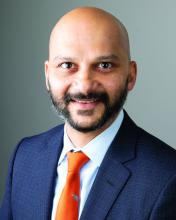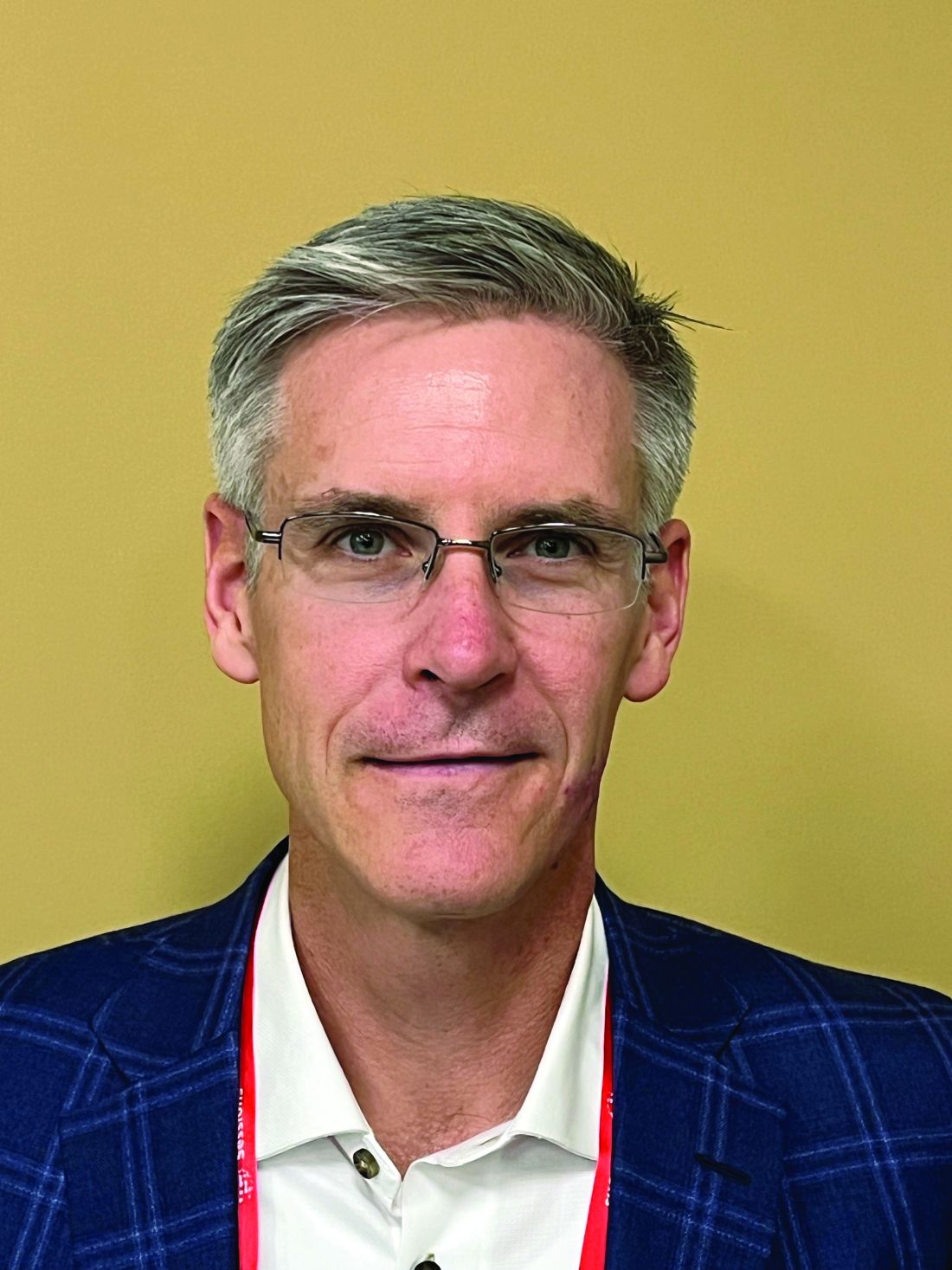User login
PHILADELPHIA – A carefully tailored program in which physicians talked with heart failure (HF) patients about the cost of their medications improved medication adherence and the likelihood that patients get the medications they’re prescribed, results of a pilot study show.
The POCKET-COST-HF trial integrated information about patient-specific out-of-pocket (OOP) drug costs into clinical encounters between cardiologists and patients with heart failure with reduced ejection fraction (HFrEF) at six clinic sites in two different health systems. Neil W. Dickert, MD, PhD, primary investigator of the trial, said OOP costs for HFrEF patients with Medicare Part D prescription drug coverage can run upwards of $2,600 a year for four-drug therapy. Dr. Dickert is a cardiologist at Emory University in Atlanta.
“The primary outcome for the study was whether patients and clinicians essentially talked about the cost of medications,” Dr. Dickert said in an interview.
The trial, which Dr. Dickert presented at the annual scientific sessions of the American Heart Association, was designed to evaluate the effect of patient-specific OOP costs in the shared decision-making about heart failure medications, Dr. Dickert said.
The primary outcome was cost-informed decision-making, achieved in 68% of the intervention group encounters and 49% of control encounters (P = .021).
Fewer in-pharmacy adjustments
“We saw some really interesting signals of potential benefits in the space of actual decisions,” he said. “There were fewer, for example, contingency plans made in the intervention arm versus the control arm, and what that means is physicians were less likely to write a prescription and leave the decision about whether or not it’s worth it to the patient when they get to the pharmacy.”
The study intervention was a checklist of 19 heart failure medications that included OOP cost, ranging from minimal costs for generics such as diuretics and beta blockers to $617 for dapagliflozin. The checklist was based on an electronic medical records HF medications checklist. Researchers obtained drug cost estimates from TailorMed, a financial navigation company.
Six clinic sites within two health systems, one in Georgia, the other in Colorado, participated in the study. Each cluster had 40 or so patients (n = 247) randomized to the intervention or control. About two-thirds were White, a quarter were Black and 4% and 2.5% in the control and intervention group were Hispanic/LatinX. Income ranges were similar across both arms.
For the study intervention, patients got a call from the clinic 2-3 weeks before their scheduled visit to obtain verbal consent to participate and their OOP costs for drugs. The visit itself, where patients randomized to the intervention received the checklist, was audio recorded. After the visit, patients took a follow-up telephone survey, then the clinic staff did an electronic health record 3 months after the visit.
Getting the patient drug price information was not easy, Dr. Dickert said. “It required a fair amount of work and a big list to get that information that we could then populate the checklist for people,” he said. “It was a behind-the-scenes thing that is not necessarily scalable as done.”
Dr. Dickert acknowledged an increasing emphasis on price transparency in medicine, but the trade-offs are unknown. “Depending upon how that’s carried out, that can have different implications,” he said. “I’m a believer that if we think good communication has the ability to enhance medical decision-making, it also means that either bad information or bad communication can undermine.
“So, I think it’s really important to study these interventions and to do them in rigorous ways where we can really get a sense of what kind of impact they have on patients and clinicians.”
Study strengths and limitations
Discussant Dhruv Kazi, MD, director of the cardiac critical care unit at Beth Israel Deaconess Medical Center and associate professor at Harvard Medical School, both in Boston, said in an interview that this study fulfills an important function in investigating how OOP costs influence medication adherence in HFrEF patients.
“The total cost of drugs has often been a focus of policy discussions,” he said. “We talk about, how do we reduce drug costs?” He noted the Inflation Reduction Act will bring some of these drug costs down.
“On the flip side,” he added, “as a community we pay less attention to out-of-pocket costs because we assume those are not in our control, yet what the patient cares about is not the total cost of the drug, but, ‘What am I going to pay this month, and what am I going to pay cumulatively over the course of the year? Can I even afford this drug?”
POCKET-COST-HF provided a sound basis for making that investigation, he said, adding that its multisite design and mixed-methods approach – patient contact before and after visits and recording of encounters – are strengths. “Just looking at the logistics involved in pulling off something like this, the study investigators deserve to be congratulated,” he said.
One limitation, Dr. Kazi said, is its exclusion of non–English speakers. Adding them in, along with testing the intervention in community, rural, and primary care settings, are future goals for the intervention, he said. Within the trial itself, examining the cost-effectiveness of the intervention would be laudable, Dr. Kazi said.
The Agency for Healthcare Research and Quality funded the trial. Dr. Dickert disclosed relationships with Abiomed. Dr. Kazi has no relevant relationships to disclose.
PHILADELPHIA – A carefully tailored program in which physicians talked with heart failure (HF) patients about the cost of their medications improved medication adherence and the likelihood that patients get the medications they’re prescribed, results of a pilot study show.
The POCKET-COST-HF trial integrated information about patient-specific out-of-pocket (OOP) drug costs into clinical encounters between cardiologists and patients with heart failure with reduced ejection fraction (HFrEF) at six clinic sites in two different health systems. Neil W. Dickert, MD, PhD, primary investigator of the trial, said OOP costs for HFrEF patients with Medicare Part D prescription drug coverage can run upwards of $2,600 a year for four-drug therapy. Dr. Dickert is a cardiologist at Emory University in Atlanta.
“The primary outcome for the study was whether patients and clinicians essentially talked about the cost of medications,” Dr. Dickert said in an interview.
The trial, which Dr. Dickert presented at the annual scientific sessions of the American Heart Association, was designed to evaluate the effect of patient-specific OOP costs in the shared decision-making about heart failure medications, Dr. Dickert said.
The primary outcome was cost-informed decision-making, achieved in 68% of the intervention group encounters and 49% of control encounters (P = .021).
Fewer in-pharmacy adjustments
“We saw some really interesting signals of potential benefits in the space of actual decisions,” he said. “There were fewer, for example, contingency plans made in the intervention arm versus the control arm, and what that means is physicians were less likely to write a prescription and leave the decision about whether or not it’s worth it to the patient when they get to the pharmacy.”
The study intervention was a checklist of 19 heart failure medications that included OOP cost, ranging from minimal costs for generics such as diuretics and beta blockers to $617 for dapagliflozin. The checklist was based on an electronic medical records HF medications checklist. Researchers obtained drug cost estimates from TailorMed, a financial navigation company.
Six clinic sites within two health systems, one in Georgia, the other in Colorado, participated in the study. Each cluster had 40 or so patients (n = 247) randomized to the intervention or control. About two-thirds were White, a quarter were Black and 4% and 2.5% in the control and intervention group were Hispanic/LatinX. Income ranges were similar across both arms.
For the study intervention, patients got a call from the clinic 2-3 weeks before their scheduled visit to obtain verbal consent to participate and their OOP costs for drugs. The visit itself, where patients randomized to the intervention received the checklist, was audio recorded. After the visit, patients took a follow-up telephone survey, then the clinic staff did an electronic health record 3 months after the visit.
Getting the patient drug price information was not easy, Dr. Dickert said. “It required a fair amount of work and a big list to get that information that we could then populate the checklist for people,” he said. “It was a behind-the-scenes thing that is not necessarily scalable as done.”
Dr. Dickert acknowledged an increasing emphasis on price transparency in medicine, but the trade-offs are unknown. “Depending upon how that’s carried out, that can have different implications,” he said. “I’m a believer that if we think good communication has the ability to enhance medical decision-making, it also means that either bad information or bad communication can undermine.
“So, I think it’s really important to study these interventions and to do them in rigorous ways where we can really get a sense of what kind of impact they have on patients and clinicians.”
Study strengths and limitations
Discussant Dhruv Kazi, MD, director of the cardiac critical care unit at Beth Israel Deaconess Medical Center and associate professor at Harvard Medical School, both in Boston, said in an interview that this study fulfills an important function in investigating how OOP costs influence medication adherence in HFrEF patients.
“The total cost of drugs has often been a focus of policy discussions,” he said. “We talk about, how do we reduce drug costs?” He noted the Inflation Reduction Act will bring some of these drug costs down.
“On the flip side,” he added, “as a community we pay less attention to out-of-pocket costs because we assume those are not in our control, yet what the patient cares about is not the total cost of the drug, but, ‘What am I going to pay this month, and what am I going to pay cumulatively over the course of the year? Can I even afford this drug?”
POCKET-COST-HF provided a sound basis for making that investigation, he said, adding that its multisite design and mixed-methods approach – patient contact before and after visits and recording of encounters – are strengths. “Just looking at the logistics involved in pulling off something like this, the study investigators deserve to be congratulated,” he said.
One limitation, Dr. Kazi said, is its exclusion of non–English speakers. Adding them in, along with testing the intervention in community, rural, and primary care settings, are future goals for the intervention, he said. Within the trial itself, examining the cost-effectiveness of the intervention would be laudable, Dr. Kazi said.
The Agency for Healthcare Research and Quality funded the trial. Dr. Dickert disclosed relationships with Abiomed. Dr. Kazi has no relevant relationships to disclose.
PHILADELPHIA – A carefully tailored program in which physicians talked with heart failure (HF) patients about the cost of their medications improved medication adherence and the likelihood that patients get the medications they’re prescribed, results of a pilot study show.
The POCKET-COST-HF trial integrated information about patient-specific out-of-pocket (OOP) drug costs into clinical encounters between cardiologists and patients with heart failure with reduced ejection fraction (HFrEF) at six clinic sites in two different health systems. Neil W. Dickert, MD, PhD, primary investigator of the trial, said OOP costs for HFrEF patients with Medicare Part D prescription drug coverage can run upwards of $2,600 a year for four-drug therapy. Dr. Dickert is a cardiologist at Emory University in Atlanta.
“The primary outcome for the study was whether patients and clinicians essentially talked about the cost of medications,” Dr. Dickert said in an interview.
The trial, which Dr. Dickert presented at the annual scientific sessions of the American Heart Association, was designed to evaluate the effect of patient-specific OOP costs in the shared decision-making about heart failure medications, Dr. Dickert said.
The primary outcome was cost-informed decision-making, achieved in 68% of the intervention group encounters and 49% of control encounters (P = .021).
Fewer in-pharmacy adjustments
“We saw some really interesting signals of potential benefits in the space of actual decisions,” he said. “There were fewer, for example, contingency plans made in the intervention arm versus the control arm, and what that means is physicians were less likely to write a prescription and leave the decision about whether or not it’s worth it to the patient when they get to the pharmacy.”
The study intervention was a checklist of 19 heart failure medications that included OOP cost, ranging from minimal costs for generics such as diuretics and beta blockers to $617 for dapagliflozin. The checklist was based on an electronic medical records HF medications checklist. Researchers obtained drug cost estimates from TailorMed, a financial navigation company.
Six clinic sites within two health systems, one in Georgia, the other in Colorado, participated in the study. Each cluster had 40 or so patients (n = 247) randomized to the intervention or control. About two-thirds were White, a quarter were Black and 4% and 2.5% in the control and intervention group were Hispanic/LatinX. Income ranges were similar across both arms.
For the study intervention, patients got a call from the clinic 2-3 weeks before their scheduled visit to obtain verbal consent to participate and their OOP costs for drugs. The visit itself, where patients randomized to the intervention received the checklist, was audio recorded. After the visit, patients took a follow-up telephone survey, then the clinic staff did an electronic health record 3 months after the visit.
Getting the patient drug price information was not easy, Dr. Dickert said. “It required a fair amount of work and a big list to get that information that we could then populate the checklist for people,” he said. “It was a behind-the-scenes thing that is not necessarily scalable as done.”
Dr. Dickert acknowledged an increasing emphasis on price transparency in medicine, but the trade-offs are unknown. “Depending upon how that’s carried out, that can have different implications,” he said. “I’m a believer that if we think good communication has the ability to enhance medical decision-making, it also means that either bad information or bad communication can undermine.
“So, I think it’s really important to study these interventions and to do them in rigorous ways where we can really get a sense of what kind of impact they have on patients and clinicians.”
Study strengths and limitations
Discussant Dhruv Kazi, MD, director of the cardiac critical care unit at Beth Israel Deaconess Medical Center and associate professor at Harvard Medical School, both in Boston, said in an interview that this study fulfills an important function in investigating how OOP costs influence medication adherence in HFrEF patients.
“The total cost of drugs has often been a focus of policy discussions,” he said. “We talk about, how do we reduce drug costs?” He noted the Inflation Reduction Act will bring some of these drug costs down.
“On the flip side,” he added, “as a community we pay less attention to out-of-pocket costs because we assume those are not in our control, yet what the patient cares about is not the total cost of the drug, but, ‘What am I going to pay this month, and what am I going to pay cumulatively over the course of the year? Can I even afford this drug?”
POCKET-COST-HF provided a sound basis for making that investigation, he said, adding that its multisite design and mixed-methods approach – patient contact before and after visits and recording of encounters – are strengths. “Just looking at the logistics involved in pulling off something like this, the study investigators deserve to be congratulated,” he said.
One limitation, Dr. Kazi said, is its exclusion of non–English speakers. Adding them in, along with testing the intervention in community, rural, and primary care settings, are future goals for the intervention, he said. Within the trial itself, examining the cost-effectiveness of the intervention would be laudable, Dr. Kazi said.
The Agency for Healthcare Research and Quality funded the trial. Dr. Dickert disclosed relationships with Abiomed. Dr. Kazi has no relevant relationships to disclose.
AT AHA 2023


